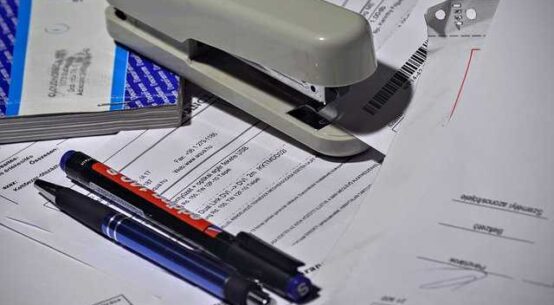What is the post office bank account opening procedure? You may have heard about this account. All account holders can get ATMs for free and can be used at other ATMs at no extra cost (limited to a certain number of transactions).
With this new facility, the post office bank account is becoming popular because account holders can use services such as withdrawal, money transfer, and account statements.
Things are entirely different here, and the significant advantage is that you can save valuable time. You will receive the account passbook and ATM card from the post office the same or the next day.
In this article, let’s see the post office bank account opening process and activation of the linked ATM card.

Table of Contents
What is a Post Office Savings Bank Account?
The post office savings bank account is popular and affordable. The minimum opening and the maximum balance that can be maintained is Rs. 500. Currently, interest rates on the savings account are 4% per year.
Minors over the age of 10 can also open this savings account in their name. A person can open only one on his name. There is no limit to the maximum amount deposited in this savings account.
You can also enjoy tax exemptions of up to 10,000 interests earned in a fiscal year under the 80TTA Income Tax Act.
What Documents are Required to Open Post Office Savings Account?
The Post office bank account opening requires:
- A self-attested photocopy of the Aadhaar card can be used as proof of photo identity and address.
- One copy of the self-attested PAN card is necessary for higher transactions. If you do not have a PAN card, you can submit a 60/61 form, which is available at the post office.
- Three passport size photos (two for attaching to the account application form and one remaining for the passbook)
- Initial payment of Rs. 50/ (without checkbook)
How to Open a Post Office Savings Account?
You can get the account opening form from the nearest post office or download it online. A separate form for senior citizens is available.
- A particular form is available for senior citizens. After filling it up, send it along with the necessary KYC documents and photos.
- Pay the amount you want to deposit; the amount should not be less than Rs. 20.
- If you wish to open a post office bank account without a checkbook, the minimum deposit is Rs. 50.
- After you pay the amount, a savings bank account will be created for you.
Also Read: Post Office Online Banking India: What You Need to Know
What is the Interest Rate on a Post Office Savings Account?
Currently, the interest rate for a savings account is 4% per year.
- Interest is calculated on the minimum balance between the 10th and the end of the month and is paid in whole rupees.
- Interest is not paid in a month if the balance is less than Rs. 500 between the 10th and the last day of the month.
- Interest is credited to the account at the end of each fiscal year according to the rate set by the Ministry of Finance
- At the time of closing the account, interest will be paid until the previous month when the account is closed
What are the Benefits of Post Office Account?
Customers who want to open this account have access to checks and ATMs. Here are some of the benefits of a post office bank account:
Cheque facility
Check facility is available for this type of account, and the existing customers of savings accounts can also request this facility.
ATM/debit card
CBS Post Office can issue ATM/debit cards to account holders who maintain the minimum balance set when the debit card was issued.
Minor Accounts
A post office savings account is available for minors. Children of 10 years of age can manage accounts with their older ones. For children under the age of 10 years, a savings account can be opened in their name, but the rights have been given to parents or guardians to use the account on behalf of these minors.
Portability
If you change residence or are dissatisfied with the postal service or other reasons, you can transfer the savings bank at the post office to the branch of your choice. You can only open one account in one post office.
Nomination Facility
The nomination facility is available for this account when you open the account. Also, the account holder can decide to appoint someone to receive the profits of the account after his death.
Joint account
Under the joint account facility, two or three adults can hold an account together. A single account can be converted into a joint account and can be converted into a single account.
The customers can make withdrawals and deposits through any electronic mode at the CBS Post office.
Long-Term Inactivity
For your account to be active, the account holder needs to make only one withdrawal or deposit transaction in three financial years.
An account is not considered inactive unless no transactions have occurred during the three financial years.
How to Activate Post Office ATM Card Initially?
ATM card can be activated after 24 hours through the Indian post office ATM.
- Fill out a simple form in the post office and collect your ATM card.
- Open the ATM kit cover. After removing the ATM card from the cover, place the signature on the back of the card.
- You will receive your secret PIN on the same cover. Be careful when opening paper with a PIN. You need to activate the card with the same four-digit secret number written on the form.
- The ATM card can only be activated after 24 hours through India Post ATMs. These ATMs are usually available at all major branches in certain cities.
- After 24 hours, you use the card in the ATM, and you will receive a message that your card verification is in progress.
- After a few seconds, you will be asked to enter a secret four-digit PIN code on the screen. You must enter the same pin you received with the ATM card. Enter that PIN, and your ATM card is now active.
- We recommend changing the system’s inbuilt password for secure banking.
- Once your ATM card is activated, you can withdraw money from ATMs of other banks as well.
Post Office Savings Account Withdrawal Limit
An account holder can withdraw the money deposited in their post savings account whenever they need it.
The only thing is the minimum balance of Rs. 50 should be maintained in the case of a general account and Rs. 500 if the account has a cheque facility.
Conclusion
The Post office savings bank account is a popular account type from India post. It is affordable and easy to maintain. You can open this account with only Rs. 500, and the minimum balance to keep the account is Rs. 500.
Any Indian above ten years can open a post office savings account. The interest rate on the savings account is 4%; the account also provides tax benefits to the holder. Parents or guardians can also open this account in the name of minors.
FAQs
How do I open a post office savings account?
Get a form from the post office or download it from the official website of India post. Duly fill-up the form and submit along with KYC documents photographs and deposit a minimum of Rs. 20.
A separate form is available for senior citizens.
How do I open a post office savings account online?
Visit the Post Office’s official website, proceed to the Savings Account option, and select Apply Now. Fill in the needed fields- Name, Birth date, Address, Contact number and click on the Submit button.
Can a minor open post office savings account?
Minors can open this account. Parents or guardians can open savings accounts on their minor’s name below ten years of age, but the rights will remain with parents or guardians. Children over ten years can operate savings accounts with their elders.
Can I open a minor account online with the post office?
Minor’s account can be opened online by visiting the Post office’s official website.
What is Interest Rate of Savings Account in Post Office?
Currently, the interest rate for the post office savings account is 4% and is paid yearly.


